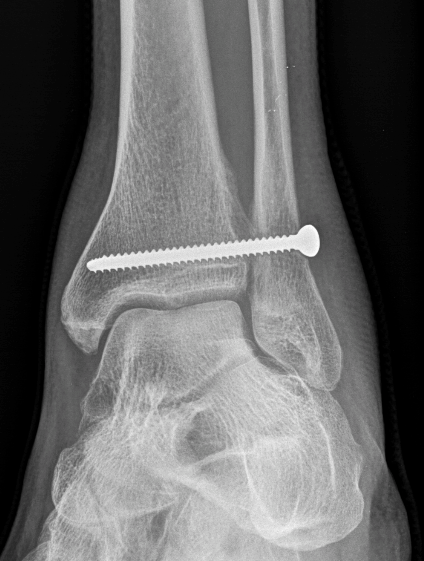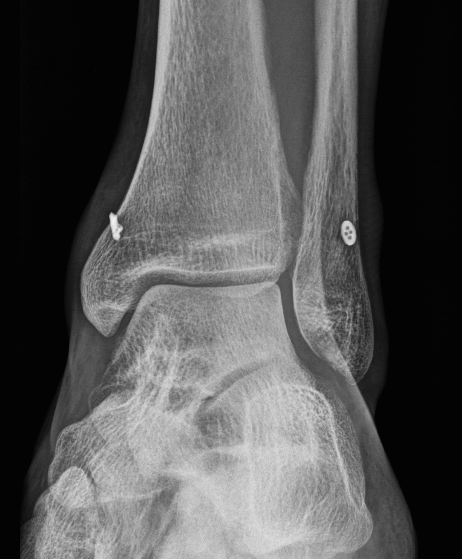The ankle syndesmosis refers to how the tibia and fibula are held together at the ankle joint. Because of the shape of the joint, the two bone should “spring” apart when weight placed through the leg. They don’t because the tibia & fibula are tightly bound together by the anterior and posterior inferior tibiofibular ligaments (AITFL, PITFL). When injured, the ankle is swollen and bruised, higher up than normal ankle sprains.
Severe injuries are universally treated surgically. Any fractures fixed, and then either one or two screws, or a suture construct between the two bone. If there is no fracture, usually the medial ankle ligament is torn. There is no clear superior technique, but untreated, 100% of the body weight goes through the top of the talus, where as normally, 40% of the weight is transmitted through the malleoli. Where screw fixation is used, it is often left in place three months, but walking permitted before the screw is removed.
A small proportion of cases, especially in athletes are isolated injuries to the AITFL. MRI might show the diagnosis but not prove whether any instability will occur. (Sensitivity for AITFL rupture 100%, specificity 93%, accuracy 96% (Takao JBJS Br 2003) In some patients then, the ankle will be stressed either with or without anaesthesia, either on XR testing or arthroscopy to fully assess. If stable, they are treated initially with a cast, RICE (Rest Ice Compression Elevation) and then physiotherapy. They take typically three times longer to heal than a normal ankle sprain, ie three months might be needed.

An XR demonstrating the talus shifted away from the tibia – the medial ligament, and both the AITFL and PITFL are torn. This should be aggressively treated.

This injury was fixed with a screw. DJM allows the patients to fully weight bear at six weeks. Typically the screw is removed about three months from insertion. If the screw breaks, the minor irritation the patient can feel caused by the syndesmosis being too rigid resolves. Sometimes the patient chooses to leave the screw permanently.

This injury was confirmed to need treatment under anaesthesia, then a stitch placed between the two bones. The button and the Toggleloc prevent the stitch cutting into the bone. This can be left permanently, but so far has not be proven to be better treatment.
